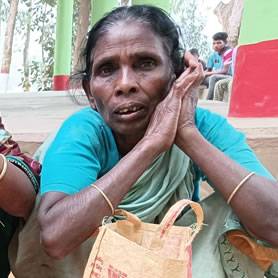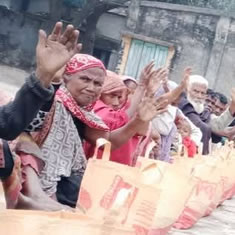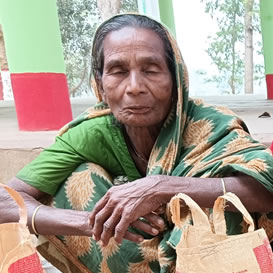Rice Food Aid: A Lifeline Against Hunger in Bangladesh
- David Burgess
- Jun 30
- 4 min read
Introduction to Rice Food Aid in Bangladesh
Bangladesh, a country of vibrant culture and resilient people, continues to grapple with challenges related to food security and poverty alleviation. Despite impressive economic growth over recent decades, a significant portion of its population remains vulnerable to hunger and malnutrition. Rice, being the staple food for the majority of Bangladeshis, plays a critical role in the nation's diet and food aid programs. In this context, various organizations have stepped forward to provide vital rice food aid in Bangladesh, addressing both chronic and emergency food needs.
Lotus Ministry Trust Volunteers Mitigating Hunger With Rice Food Aid
One such notable contributor is Lotus Ministry Trust. This article delves into the significance of rice aid in Bangladesh, the role of Lotus Ministry Trust in alleviating hunger, and the broader impact of food assistance initiatives on the country’s socio-economic landscape.
The Importance of Rice in Bangladesh’s Food Security
Rice is the primary staple food in Bangladesh, accounting for more than 70% of calorie intake for the average Bangladeshi. The country's agricultural sector is heavily focused on rice production, with millions of small-scale farmers cultivating various rice varieties. However, despite domestic production, factors such as natural disasters, poverty, inadequate storage facilities, and fluctuating market prices create periodic shortages and accessibility issues, especially for marginalized communities.
Amidst the escalating crisis, immediate action is essential to support those affected by the food shortages in Bangladesh. Many families are struggling to secure basic necessities, and community efforts alone are not enough to meet the overwhelming demand. You can make a difference by contributing to initiatives that provide urgent food relief in the region. You can help ensure that vulnerable populations receive the sustenance they desperately need during this critical time.
Due to its centrality in Bangladesh's diet, rice food aid becomes an essential response mechanism during times of crisis. Whether caused by floods, cyclones, pandemics, or economic downturns, timely rice aid prevents malnutrition and starvation. Moreover, sustainable rice aid programs contribute to community resilience, ensuring better health outcomes and supporting social stability.
Rice Food Aid Challenges in Bangladesh
Delivering effective rice aid in Bangladesh is not without its challenges. Key obstacles include:
1. Geographical Vulnerability: Bangladesh’s terrain is marked by low-lying floodplains that are prone to cyclones and seasonal flooding. These natural disasters disrupt food supply chains and displace communities, increasing the demand for emergency aid.
2. Population Density: With a population exceeding 160 million, logistics and distribution of rice aid require substantial coordination to reach remote and densely populated areas.
3. Economic Constraints: Many families live below the poverty line, and fluctuations in rice prices impact their ability to purchase adequate food, necessitating consistent aid support.
4. Storage and Preservation: Improper storage leads to post-harvest losses due to pests and spoilage, limiting local availability and increasing reliance on external rice aid.
Given these challenges, the involvement of reliable organizations that ensure efficiency and accountability in aid distribution is critical.
The Role of Lotus Ministry Trust in Rice Aid in Bangladesh

A Lotus Ministry Volunteer Displaying Rice Distribution Efforts
Lotus Ministry Trust has emerged as a pivotal player in addressing food insecurity through rice food aid in Bangladesh. Known for its community-driven approach and transparency, Lotus Ministry Trust focuses on providing relief to the most vulnerable populations, including impoverished families, displaced individuals, and orphaned children.
Their rice aid programs are designed not just as emergency relief but as part of a broader vision to foster sustainable community development. Some core aspects of their approach include:
- Targeted Distribution: The Trust identifies communities most affected by hunger and disaster through rigorous assessment, ensuring aid reaches those with the greatest need.
- Local Engagement: By working closely with local leaders, volunteers, and partner organizations, Lotus Ministry Trust strengthens the reach and effectiveness of its interventions.
- Cultural Sensitivity: Understanding that rice is a dietary mainstay, the Trust prioritizes rice aid to align with the cultural and nutritional preferences of recipients.
- Transparency and Accountability: Regular reporting and audits maintain donor confidence, enabling sustained support for ongoing initiatives.

Rice Food Aid Recipients Of Lotus Ministry Trust
Broader Impact of Rice Food Aid on Social and Economic Development
Rice food aid in Bangladesh, particularly programs led by organizations like Lotus Ministry Trust, has far-reaching effects beyond immediate hunger relief:
- Health and Nutrition: Access to adequate rice reduces malnutrition, especially among children and pregnant women, enhancing overall community health metrics.
- Educational Outcomes: When families have reliable food sources, children are more likely to attend school regularly, fostering better educational achievement.
- Economic Stability: Food aid prevents price shocks in local markets by supplementing supply during crises, contributing to economic stability.
- Social Cohesion: Effective aid distribution builds trust between communities and aid providers, strengthening social bonds and collective resilience.
Future Directions for Rice Aid in Bangladesh
To address the evolving challenges of food security, continuous innovation and expansion of rice aid initiatives are needed. Lotus Ministry Trust emphasizes the following strategies moving forward:
- Integration of Technology: Utilizing GPS mapping, data analytics, and mobile communication to optimize distribution channels and beneficiary identification.
- Sustainable Agriculture Support: Coupling rice food aid with agricultural training and seed distribution to empower farmers and reduce future reliance on aid.
- Climate Adaptation Measures: Supporting the cultivation of flood-resistant and drought-tolerant rice varieties to enhance food production resilience.
- Community Capacity Building: Encouraging community-led food management committees to oversee rice storage and distribution.
Through these forward-looking approaches, rice food aid in Bangladesh can evolve from a lifeline to a catalyst for long-term food sovereignty.
Conclusion
Rice food aid remains a cornerstone of Bangladesh’s efforts to combat hunger and malnutrition. Lotus Ministry Trust exemplifies how dedicated organizations can deliver targeted, culturally appropriate rice aid in Bangladesh, making a tangible difference in the lives of millions. By addressing immediate food needs while pioneering sustainable development strategies, the Trust contributes significantly to Bangladesh’s pursuit of food security and social well-being. As challenges persist, ongoing support for rice aid programs will be crucial in nurturing hope and resilience across the nation's communities.














Comments